2020: New Year, New Decade. Are You Ready?
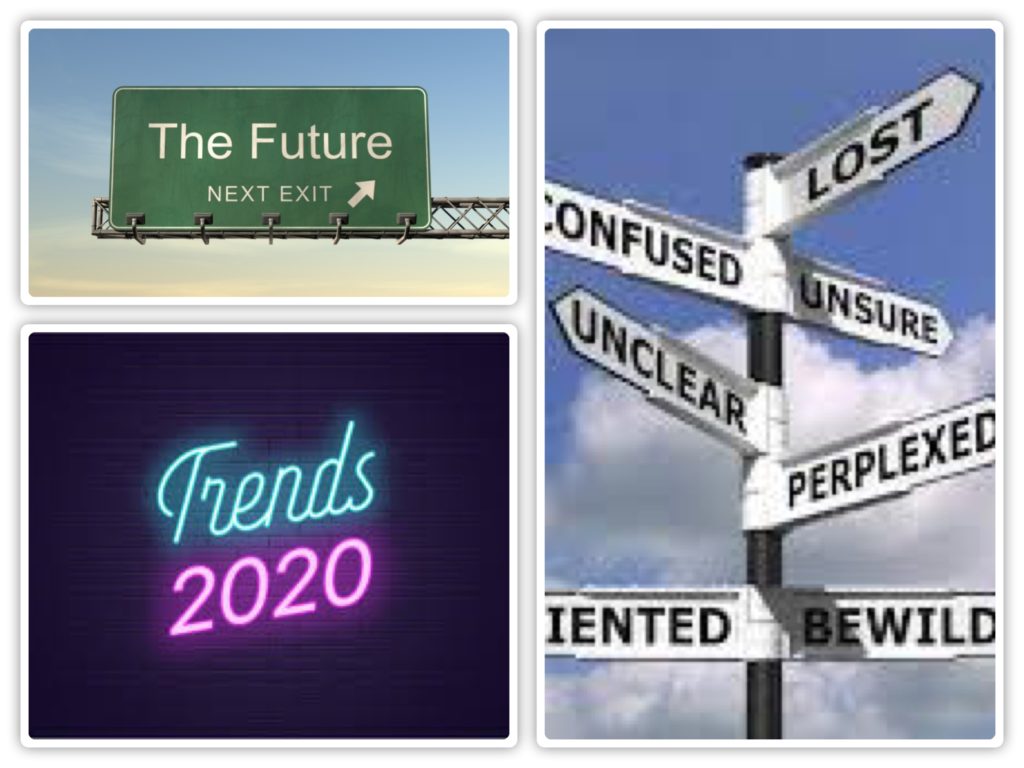
What a crazy decade it’s been, right? And as we head into 2020, all I can say is buckle up because it’s only going to get weirder. And while this post is NOT meant to offer any kind of all-inclusive list of trends, I do believe that every topic I have included will impact our lives in the future. One thing I am absolutely certain of: change is inevitable and it’s coming at us faster than ever, mostly because of technology and the power of social media.
My criteria for what to include (or not) in this “next decade” post is based on the work I’ve been doing with trends and culture shifts for the Opinionator since its founding in 2014. It’s been extremely helpful to see which themes have gradually become more prominent, what topics have received the most comments and shares, and, importantly, what countertrends are developing as we become a more pluralistic, multi-track society. Like it or not, we are increasingly moving away from being ONE nation and instead we’re seeking out “our” tribes among the myriad of micro-communities that have sprung up around us.
“Looking ahead starts with looking back, then connecting the dots that define the present. Only then, can one get clarity about the future.”
Steve Jobs
Scroll down now to begin this journey into the future!
1: CHAOS AND MAYHEM: Clash of Ideologies
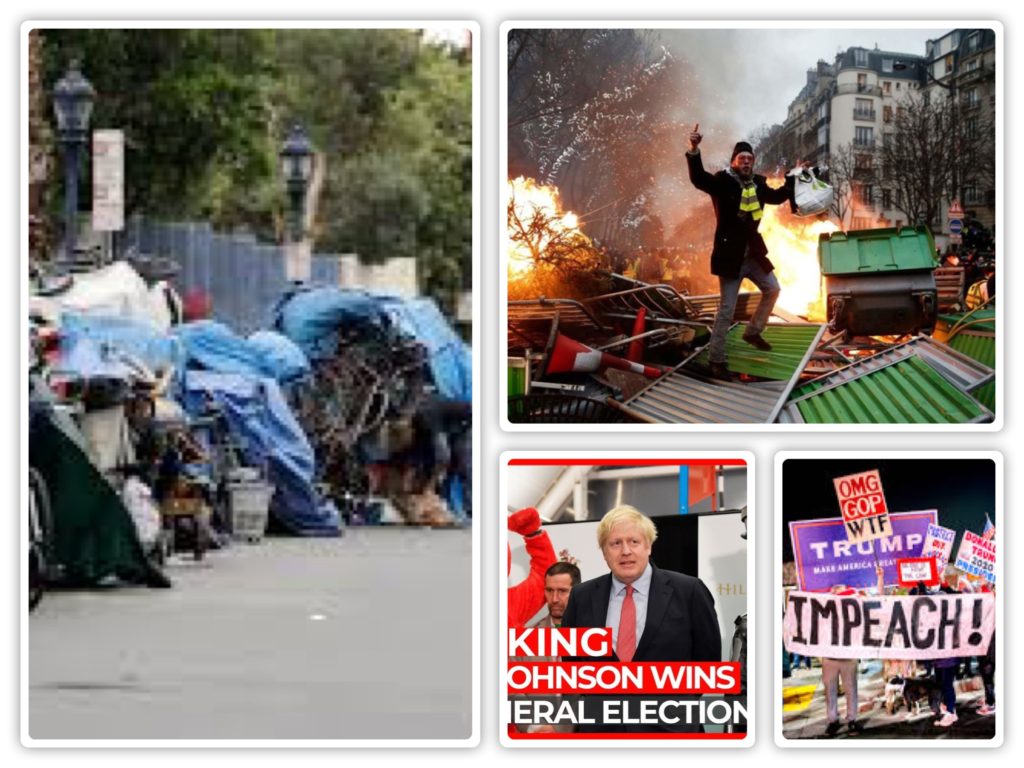
What is going on – and why?
The American Dream is crumbling. Politically, the country is more polarized than I have seen it at any time since the ’70s (Vietnam War protests, shooting at Kent State, Watergate). Trump is currently being impeached but will remain in office. As I’m writing this, there have been three mass shootings reported just today in different parts of the country (and it’s not even lunchtime yet). The country’s infrastructure is going to hell in a handbasket. We have rampant homelessness (80,000 in NYC alone), massive mental health and substance abuse issues. Violent crime is once again on the rise. Protests from coast to coast. Store vacancies at an all-time high. Measles are back because anti-vaxxers don’t believe in the science. And our oceans and landfills are drowning in plastic. Frustratingly, truth (and science) have become fungible. People believe whatever suits their whims e.g. Robert F. Kennedy Jr., an avowed anti-vaxxer does not believe in the science of vaccinations but he’s all in on the science of climate change. No wonder Trump’s able to spin his “alternative facts” so successfully. We believe what we believe, facts be damned.
But it goes beyond America
Around the world, conservative groups have been gaining influence, bolstering the power of right-wing leaders. It is a trend driven not only by older generations but also by the young.
BBC (Nov 5, 2018)
It turns out the election of Donald Trump in 2016 was not as much of an outlier as a harbinger of what was to come. The shift to the right is happening around the globe.
Boris Johnson’s landslide victory for conservatives in the UK signals that Dems may have a tougher time at the polls come this election season than they might have reasonably thought. Other countries with right-leaning leaders at the moment include Brazil, Poland, Hungary, Thailand, and India.
What does this portend for 2020 and beyond?
America’s major cities will continue to come apart at the seams. I, for one, am no longer visiting LA or San Francisco because homelessness is so out of control. I am not alone. Major conventions are foregoing those cities as well. Having to sidestep human excrement not only on the sidewalks of San Francisco but in aisle 7 of the local supermarket is the final straw for many.
Crime, likewise, is once again rampant in NYC (and most likely other cities). After years of decline, murders are up 9% largely due to gang violence (and yet the NYPD is being urged to erase their gang database). Violent crime in one park in NYC is up 82%. The most violent offenders are frequently young teens. And in January 2020, we can look forward to having thousands of defendants, who have been charged with over 400 different crimes, mandatorily released. Judges will have no discretion on whether or not to set bail. What could possibly go wrong?
Mental Health and Addiction is becoming an ever more massive global problem. Currently, 1.1 billion of the world’s 7.8 billion people suffer from some form of mental illness or substance abuse. I don’t know what other countries are doing to solve this problem but in the US, those with mental health issues are generally left to their own devices and often end up homeless or in jail. They are not receiving treatment although NYC is spending $1 billion on a program run by the mayor’s wife (who has zero experience in the mental health field). And, you’d indeed be right if you predicted that zero expertise would lead to zero results.
Expect to see more culture clashes and intolerance as groups fight to dominate the future. In progressive cities like NY or LA, these intractable problems will ultimately be addressed at the ballot box when voters opt for more of the same or seek out more conservative candidates. How long before that happens? The backlash to years of failed policies has begun. I think we are close to the tipping point in NYC and LA.
2. THE NEW NEW-AGE MOVEMENT: Looking for comfort and guidance in times of uncertainty
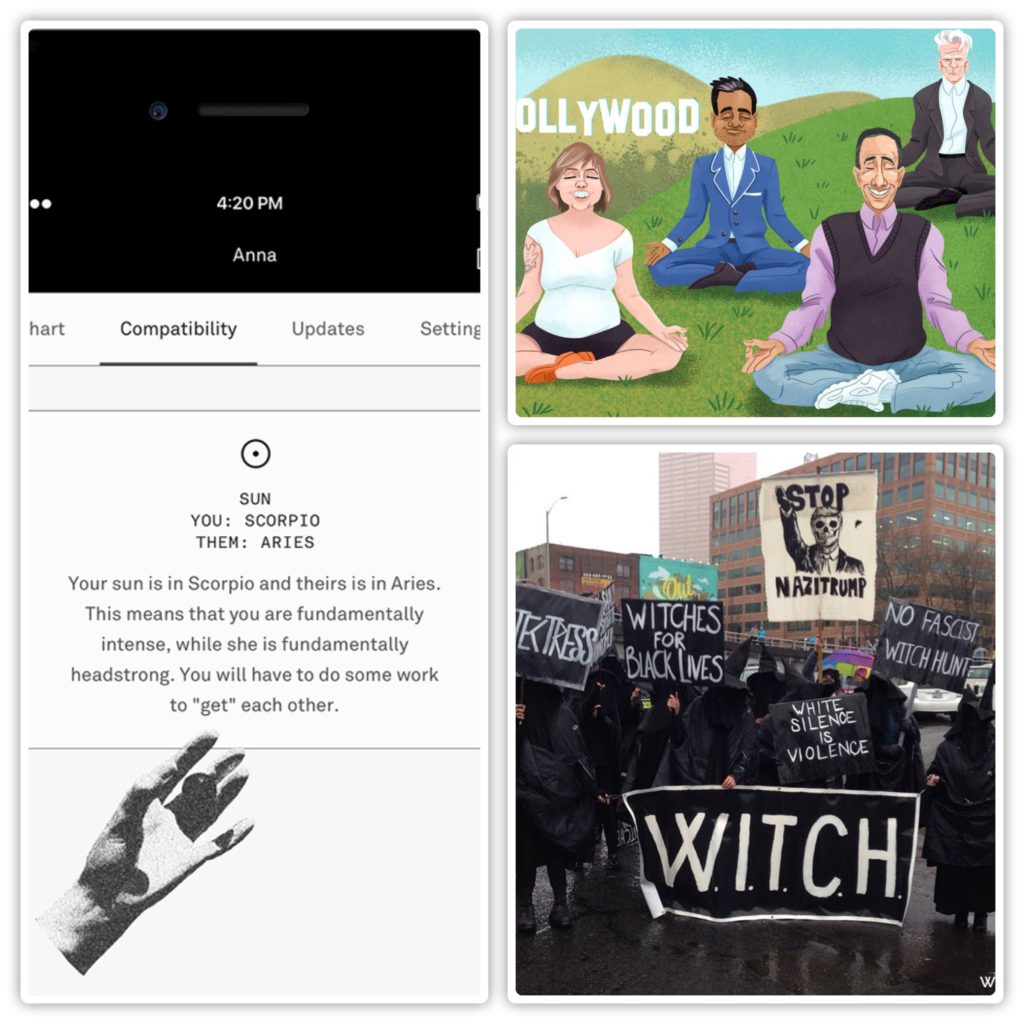
What’s going on?
When the world gets this chaotic we seek out touchstones to help us make sense of it all. Astrology is trending as never before – especially with millennials. Meanwhile, Hollywood and the business world have gotten into meditation. Everyone from Oprah to Katy Perry, Marc Benioff, and Ray Dalio are meditating.
“Transcendental Meditation has probably been the single most important reason for whatever success I’ve had.”
Ray Dalio, Founder, Bridgewater Associates
Witchcraft is also booming. According to the Pew Research Center, about 1.5 million Americans identify as Wiccan or pagan. A decade ago, that number was closer to 700,000. At the same time, U.S. church membership continues to decline (down from 70% two decades ago to 50% currently).
What’s next?
Look for products and services that link the metaphysical with technology, e.g., the Co-Star app that brings astrology into the 21st century using NASA data and artificial intelligence to track the stars and sky at your exact time and place of birth. It’s hyper-personalized and operates in real-time. I’m a huge fan and find it incredibly accurate.
But most of all, this trend has a very ’70s vibe. It’s quintessential Age of Aquarius stuff, but with a tech twist. Expect to see whole industries built around the New, New-Age. It’s going to be BIG!!
3. A NATION OF SINGLES

What’s Up with relationships and family?
Staying single has become the norm with fewer people around the world getting married (about half of adults in America are now married vs. three-quarters in 1960).
Reasons for this are numerous including waiting longer to get married in order to finish college and get established in a career. But the longer people wait to get married, the more comfortable they become with themselves and the less likely they are to compromise on what they want in a partner.
Many ultimately decide to stay single or cohabit with their partner instead of getting married. Remaining childfree has also become an ever more popular option. Additionally, fewer adults are remarrying following a divorce or the death of a spouse.
This trend will continue as more women than men graduate from college (the overall 6-year graduation rate is now 63% for females and 57% for males). As a result, women are starting to outearn men which makes getting married less essential versus back when women were raised to be housewives and mothers.
Another newish development that I believe will make marriage less appealing is the growing anti-men sentiment associated with the #MeToo movement. I’m overhearing conversations daily filled with disdain for men in general along with specific complaints about the patriarchy, male privilege, mansplaining, and every other kind of negative take on men. This does not auger well for marriage.
One group, however, is getting married: members of the LGBTQ community are heading down the aisle in record numbers. Whether their decision to go the traditional marriage/family route will influence others to reconsider the value and importance of marriage remains to be seen. I’m dubious since many of those same LGBTQ marriages are already heading to divorce court.
Pets are the new kids. As millennials delay marriage and kids, they turn to pets to fill the void. In 2018, pet care was a $225 billion business in North America. By 2023, it is expected to rise to $281 billion.
“The common thread is how dogs and pets make us feel. We live in a more stressful world than ever. So, we do rely on that comfort and reassurance. “
Ree Drummong, TV Host/Blogger
Petco is opening kitchens in stores, where people can buy meals prepared by chefs for their pets. Walmart is adding vet clinics to 100 stores.
More than 4,500 new pet-food products — the majority premium options — were introduced in 2017, a 45% increase from the prior year.
What’s next?
The singles trend is still in its infancy globally. Although Jack Ma, the founder of Alibaba saw the potential when he created Singles Day (11/11) in 2009. It has since become the world’s biggest 24-hour shopping event racking up a staggering $38 billion in one-day sales.
The smartest companies are starting to view singles as VIPs, not second-class citizens. More businesses (especially in hospitality and travel) are waking up to the fact that singles represent a huge business opportunity. For example, I appreciate the fact that most of the best, new restaurants now welcome solo diners with great service and seating at the chef’s counter or at a communal table.
And then, of course, we have to start focusing on Gen Z to see how they weigh in on family and relationships.
4. LEANING INTO AN AGELESS FUTURE: Over-60s are having a moment!

“Our collective understanding of what later life looks like remains woefully outdated. In the future, ageless living will become the norm for all of us, as continuing advances in longevity make extended healthy lives a reality.”
Marie Stafford, European Director, JWT Innovation Group
What’s going on?
10,000 Americans a day are turning 65. That makes people over 65 (including me!), the fastest-growing age group in America.
Over-65’s will soon outnumber children for the first time in U.S. history. By 2034, there will be 77.0 million people 65 years and older compared to 76 million under the age of 18.
But today’s 65-year old is nothing like their father or their mother’s mother at that age.
And yet, most marketers remain absolutely clueless when it comes to understanding my 65+ cohort. The majority of things I see geared to my age group makes me shudder. There’s so many of us, you’d think companies and brands trying to reach us would have gotten it right by now. So far, no such luck.
Here’s what I propose.
Just as we long ago started being more inclusive by creating products and advertising that avoid stereotypes around gender, sexual orientation, race and ethnicity, I suggest it is high time that those same standards be applied to age. Let’s strive to be ageless thinkers. Most of my cohort is busy living life and most of us believe age will take care of itself. After all, the only things I buy specifically because of my age are limited to my arthritis, e.g., slip-on sneakers, and Tylenol for arthritis relief. My apparel purchases at COS, my SodaStream, my new iPhone, my dining out, my travels are all related to my interests and my passions, not my age.
here’s what we’ll see a lot more of in the future
Silver-haired influencers:
Last year, an influencer marketing agency announced that the accounts they identified as the top 10 senior influencers on Instagram had seen a 24% increase in followers since September 2017.
Not surprising, I follow many of those same silver-haired Instagrammers myself.
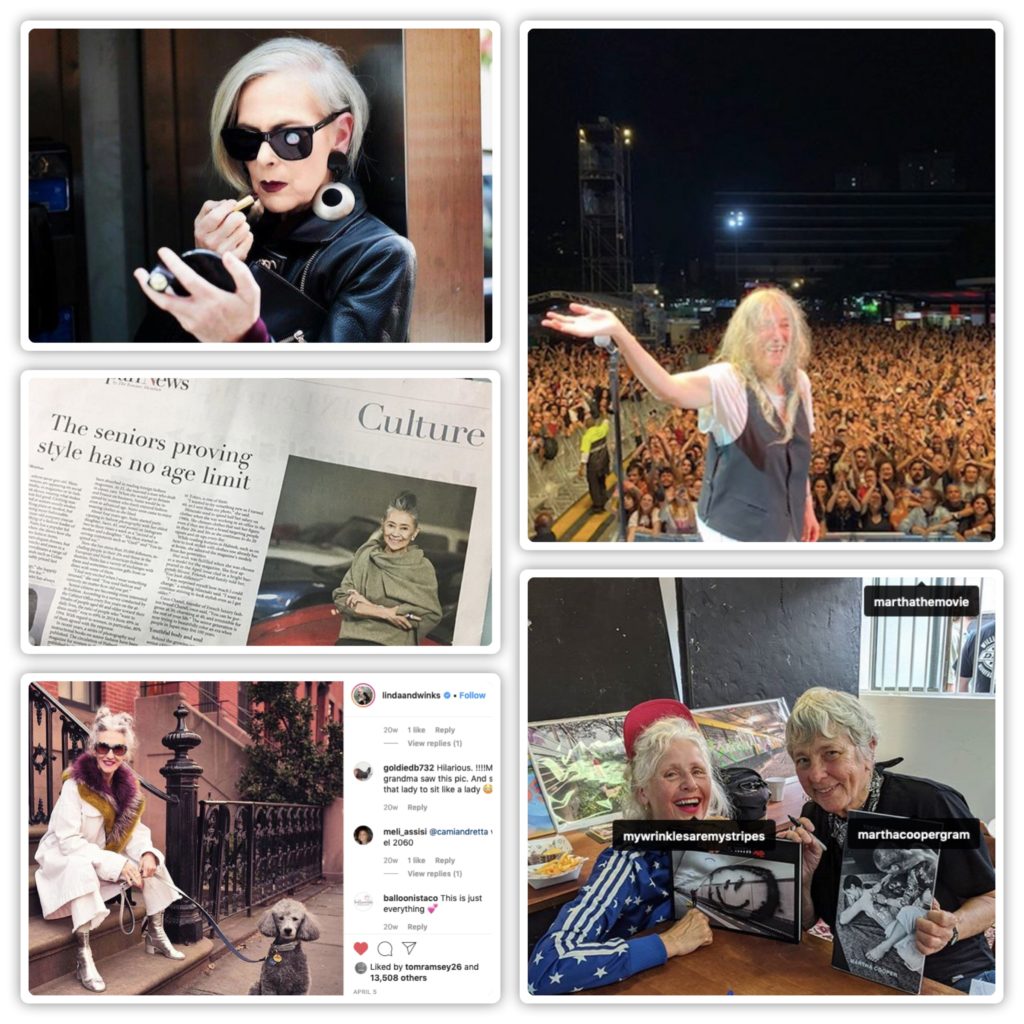
And finally, here are 4 of my most popular and well-read posts about age.
5: WORK? INCREASINGLY ABOUT THE GIG ECONOMY
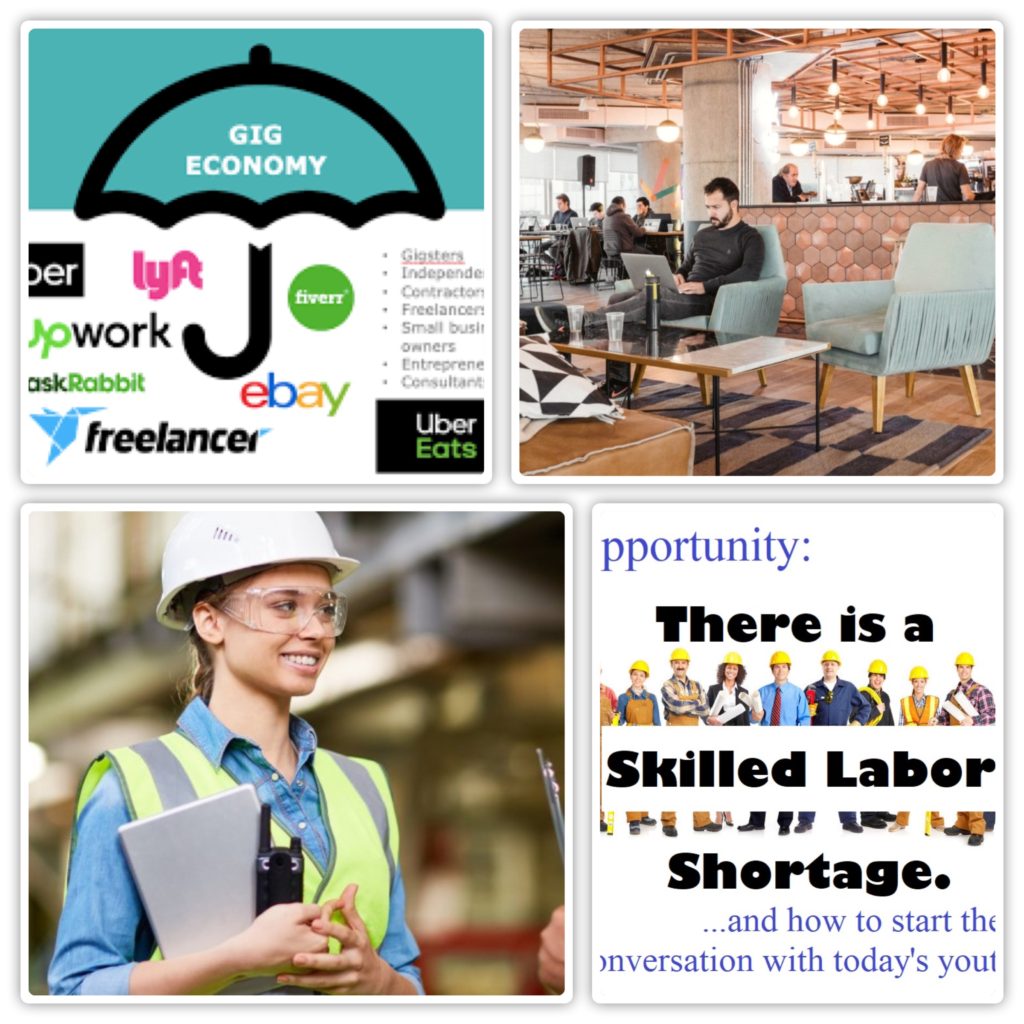
“With A New Decade Approaching, Nearly 6 in 10 U.S. Workers Are Looking to Change Something About Their Work or Career in 2020“
Fiverr & YouGov
According to the Federal Reserve, there are as many as 75 million gig workers in America. Per the Freelancers Union, 57.3 million Americans are freelancing, or 36% of the workforce. If current trends persist, more than half of the country’s workforce will be doing some sort of freelance work eight years from now.
An Upwork study entitled “Freelancing in America” found that more than half of freelance workers would not go back to traditional employment, no matter how much money was on offer. McKinsey also found that 78% of gig workers say they are happier than those working in traditional jobs.
I first wrote about the gig economy in 2014 and frequently thereafter weighed in on the impermanence of traditional full-time jobs. Employees rarely seem to last more than two years in a new job. Which is why personal branding and staying in perpetual learning mode are so important. The best advice for all full-time employees is to mentally always be in gigging mode. It’s the best way to keep your skills sharp and your network and social media up-to-date. I’m not suggesting people actively pursue new opportunities while they are in full-time jobs. What I am suggesting, however, is keeping a freelancer’s mindset!
And it’s not just in America
The freelance revolution has landed in Japan and is gaining momentum quickly.
According to crowdsourcing firm Lancers, 17% of Japan’s workforce are classified as freelance. While the figure lags far behind the United States, Japan’s figures are up 5% from the previous year.
The UK seems to be following in America’s footsteps as well. Their freelancer economy has doubled in size in the past three years. Now, 4.7 million workers – or one in 10 working-age adults – are engaged in the gig economy.
For more info and excellent statistics, check out smallbizgenius.com. Link here.
Co-working
I’ve been such a big fan of co-working spaces both at Neuehouse and for the last several years at Soho House. I love the freedom of it, the vibe, the social aspects. I’ve frequently said I would not go back to leasing an office if I were to start my business today.
However, it’s been clear for a few years that the co-working bubble was about to burst. Too many co-working spaces have been opening – some totally random, e.g., at an abandoned mall or at a soon to be out of business Staples store. That just sounds depressing and delivers none of the razzle dazzle people love about the best of the co-working spaces.
And then, of course, as we all know the day of reckoning came and WeWork teetered on the brink of bankruptcy. And now everyone is wondering if co-working is a good idea at all. And I say, yes it is! But it has to be profitable. And that begs THE question for the new decade. Can co-working be profitable and yet affordable for its users?
Let’s hear it for the trades
I’ve written endlessly about the value of the trades, everything from rebranding the trades, women in the trades, the number of job opportunities in the trades -all to no avail. At the end of the day, it seems everyone aspires to go to college – debt and all. So ridiculous. Become plumbers and contractors people! You’ll always have a job, it’s entrepreneurial and it pays well. In NYC, I pay my plumber more than I do my lawyer.
We have to turn the tide on this but it’s going to be a challenge.
Tech not so cool anymore – whether full time or as a contract worker
Finally, a sure sign of how tech is losing its cachet, the latest study from Glassdoor surveying where people want to work sees Google dropping from #8 to #11 and Facebook dropping from #7 to #23. Top 5 companies are HubSpot, Bain & Company, Docusign, In-N-Out Burger, and Sammons Financial. I don’t get those choices at all, but that’s apparently where people want to work today.
6: TECH IS IN A FUNK
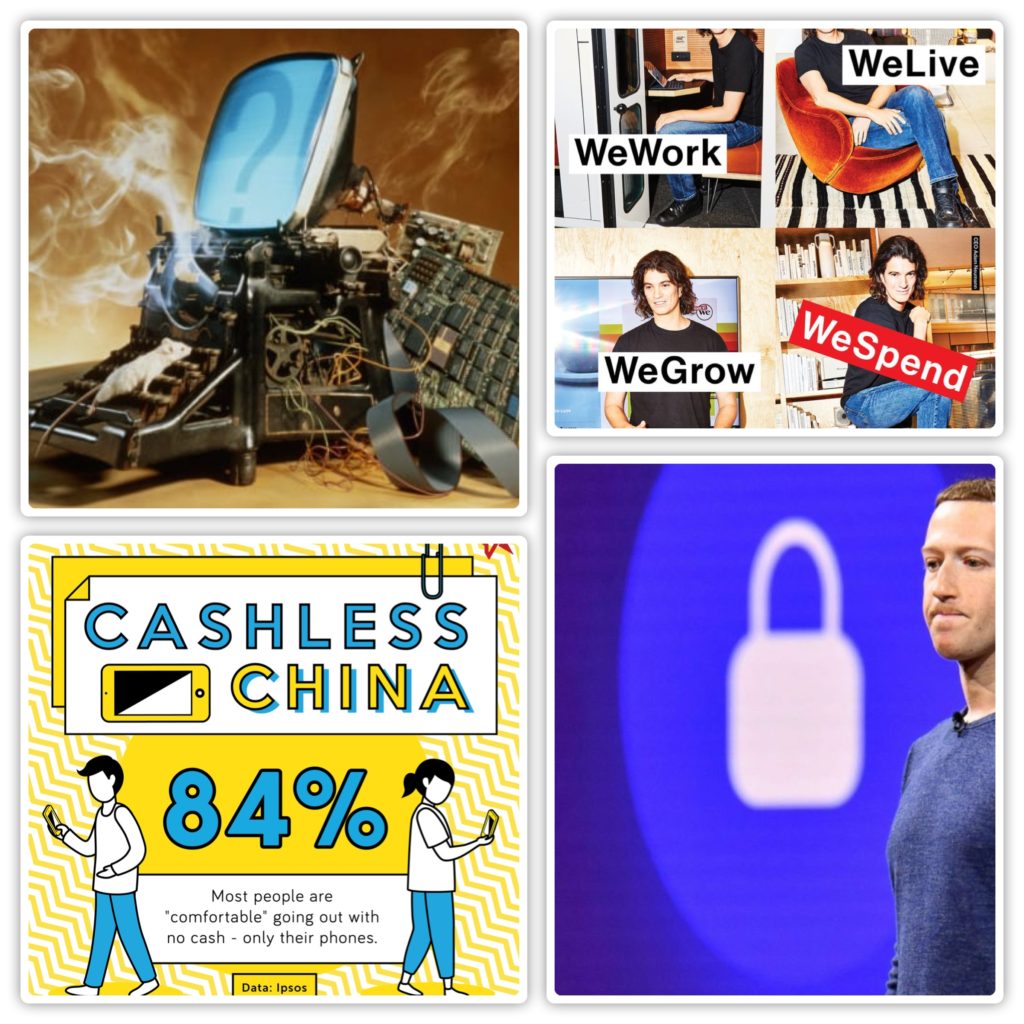
What happened and why?
The tech juggernaut started running into problems about five years ago.
Apple, while still making tons of money, fizzled out when it comes to creating exciting products. Tim Cook is no Steve Jobs! Then Facebook got into a whole heap of trouble for that Cambridge Analytica data scandal in early 2018. They harvested personal data of millions of Facebook profiles and used it for political advertising. If Hilary Clinton had won, would we be talking about this now? I doubt it.
Then there were all those crazy founder stories. Everything from Zuckerberg only eating meat from animals he’d killed himself to Elon Musk’s twitter tirades and Adam Neumann’s WeWork IPO debacle.
As tech’s gotten a little sleazier and more Wall Street-ish, young people have become less enamored about working for tech companies (as noted above).
And finally, startups and VCs got a harsh dose of reality when too many IPOs tanked and VC’s finally woke up to the fact that profitability was elusive and doubly so if they didn’t ask their startups to show them the money! That said, although everyone is very cautious right now, I am convinced deals will continue to happen!
Spending fast to grow fast is just no longer feasible. It is now difficult for “a growth-at-all-costs company burning hundreds of millions of dollars with negative unit economics” to get funding.
VanderZanden, CEO Bird Scooter
Will anything be a sure bet for 2020 and beyond?
Going cashless. China is now the world’s biggest cashless marketplace. Just by scanning QR codes with their phones, citizens can pay for almost everything. The mobile payment market is dominated by two apps, WeChat Pay and AliPay, which have hundreds of millions of active monthly users. My friend who recently moved to China tells me she feels like she’s been propelled at least 7 years into the future.
Mobile. Over the last decade, the combination of smartphones and apps has changed everything from how we shop to how we work and how we are paid.
5.1 billion of the 7.8 billion people in the world have a mobile phone. That’s roughly 65% of the population – and in five years, that will grow to 71%. Everything needs to be mobile-first! And in Asia and Africa and other first-mover cashless societies, they are not holding back progress because some people are unbanked. They are actively figuring out how to get everyone on mobile to become part of the cashless society. That kind of can-do thinking is why Asia is on the ascendancy while America is falling behind.
25 billion devices capable of interacting with the internet – up from nine billion today. Per PYMNTS, within 5 years, everything from homes to offices to appliances will be capable of enabling transactions. Appliances will troubleshoot problems before they exist, ordering parts and alerting service technicians to set up a service call before things break down. Connected car shipments in the U.S., China, and Europe are expected to double in the next three years.
BTW, every time I write about mobile, I think about Moses Ma and how I screwed up a tremendous opportunity. Moses Ma is a renowned technology visionary. 30 years ago he invited me to speak at a mobile phone conference in Hawaii. He wanted me to talk about teens for an audience of smartphone developers. I could kick myself for not doing it but I didn’t see what he was getting at. I was still using a Blackberry and this was way before the iPhone and apps. I couldn’t see how integral smartphones would be to our lifestyle. One of the biggest regrets of my working life.
Other ideas being bandied about for what’s next in tech: AI, Voice, telemedicine, wearables, robots. I personally would be thrilled if I never see another e-scooter idea. But if somebody could provide me with super fast and reliable Wi-Fi at home, I would be giddy with excitement. Spectrum can you make that happen?
7: RETAIL IN AN ABSOLUTE FREEFALL – STILL!
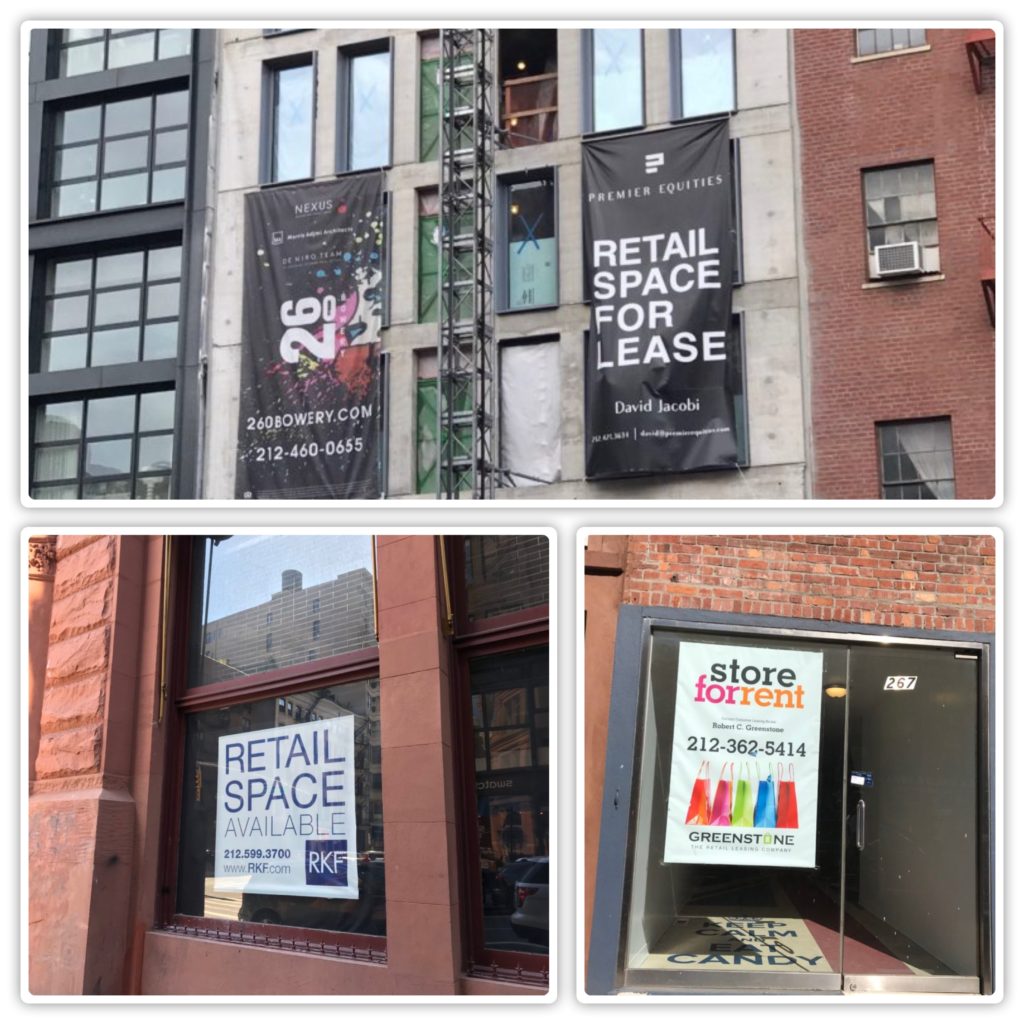
More than 9,300 US stores are going dark in 2019 as retail right-sizing continues.
yikes!
For every 1% increase in online sales, 8000 stores will shutter!
1.3 million retail employees have lost their jobs this decade.
Spending on apparel is down by 50% over the last few decades.
25% of malls are expected to shutter between 2017 and 2022.
By 2026, online sales are expected to comprise 25% of retail forcing an additional 75,000 stores to close, including 20,000 clothing stores and 10,000 consumer electronics stores. (Source: UBS)
So is anything doing well at retail?
Pop-Ups: HUGE but hardly a solution for all that vacant retail space. The trend is to extended pop-up “residencies” – often for several weeks or months. Plus, with so many empty storefronts, companies wanting to test an idea have their choice of locations. Pop-Ups are the retail version of the gig economy.
Dollar Stores are booming. Over 10,000 new ones opened over the last decade.
Dollar General sales are up 9% to $7 billion for its fiscal third quarter.
“The quarter was highlighted by our best customer traffic and same-store sales increases in nearly five years.”
Todd Vasos, CEO Dollar General
Other Retail Winners
Dozens of buzzy DTC companies like Everlane, All Birds, Casper, Glossier, Warby Parker and Away have cultivated mass followings on social media and are now expanding their reach with strategic brick-and-mortar locations.
Vintage streetwear?
Virgil Abloh, the artistic director of Louis Vuitton’s men’s wear collection, raised a few eyebrows with this recent interview about streetwear in highsnobiety:
“I would definitely say streetwear’s gonna die, you know? Like, its time will be up. In my mind, how many more t-shirts can we own, how many more hoodies, how many sneakers? I think we’re gonna hit this really awesome state of expressing your knowledge and personal style with vintage – there are so many clothes that are cool that are in vintage shops and it’s just about wearing them. I think that fashion is gonna go away from buying a boxfresh something; it’ll be like, hey I’m gonna go into my archive.
Virgil Abloh
Retailers are also trying their hand at hospitality with various degrees of success
RH (Restoration Hardware) has added restaurants to several of their stores. Based on my experience, only worthwhile if you are a diehard RH fan – otherwise, don’t bother.
Saks, Polo, and Tiffany’s have all added restaurants, bars, and cafes. Neighborhood Goods, the new department store concept at the Chelsea Market is also adding a restaurant shortly.
Hudson Yards, which I happen to love, is clearly turning out to be more of a dining destination than a shopping mecca. Proof positive, if we needed it, that people are still much more into experiences than things.
Shinola is getting into hotels. They’ve just opened their first one in Detroit. West Elm was supposedly opening a number of boutique hotels starting in Indianapolis. However, I haven’t found anything on it since 2016 so perhaps they thought better of it. They are, however, partnering with Westin to provide a group of curated items created specifically for Westin and offered for retail online.
What most of these retailers are discovering is that hospitality is every bit as hard to get right as retail. The only one that seems to have made a real go of it is Ralph Lauren’s Polo Bar restaurant. Pretty fabulous and impossible to get a reservation.
WHAT’S NEXT?
Small, hyper niche brands
Small is cool because it connotes rarity, authenticity, and frequently contemporary luxury. And sometimes it even scales.
Expect to see more big companies with lots of cash scoop up small startups that have tons of cachet but no cash. Three examples from the last decade include Nestle’s purchase of Blue Bottle, Unilever’s acquisition of Sir Kensington, and Carlyle Group’s 50 percent stake in Supreme. Interestingly all in 2017.
Social Media Shopping
So many people talking about shopping right off social, especially Instagram.
And indeed, they are onto something. 60% of people discover products on Instagram and 78% of Americans use Facebook to find new products. 74% of shoppers are ready to make a purchase through a chatbot on social media.
Bored With Millennials? Yeah, Me Too!
They’re turning 40 and moving to the ‘burbs (yawn!). So it’s going to be all about Gen Z now. Which must be why so many millennial-centric companies have gone bust or been seriously downsized recently, e.g., Whole Foods has shuttered its 365-grocery stores, Walmart is letting Jet fall by the wayside, Millennial pink is so over and dozens of media startups geared at millennials have gone bust (Mic, Rookie, Jezebel, Vocativ, Fusion Media).
Vintage?
If Virgil Abloh is correct, we should see the retro and vintage market grow in leaps and bounds. I’m not convinced. But if it does happen it will be almost like Hipster 2.0 or another sign that the ’70s renaissance is upon us.
Reverse logistics – an absolute nightmare proving that free shipping has turned into a monster
For 2019, total returns of purchases made both in stores and online during the holidays are expected to top $100 billion, up from more than $90 billion last year. ($41 billion for online only)
UPS has said it anticipates handling more than 1 million returned packages every day this holiday season, reaching a peak of 1.9 million items on Jan. 2.
I’m not sure people realize this but most returns do not end up back on store shelves. The vast majority ends up in U.S. landfills to the tune of 5 billion pounds of waste each year! And the returns rate is growing by 10% annually.
Free shipping and free returns is not a sustainable business model. It is only a matter of time before it has to be clawed back from us – and not a minute too soon.
Also, anybody who claims to be concerned about the environment but then orders items with the intent of returning most of them has not one iota of credibility when it comes to talking about climate change.
8. FOOD AND BEVERAGE TRENDS
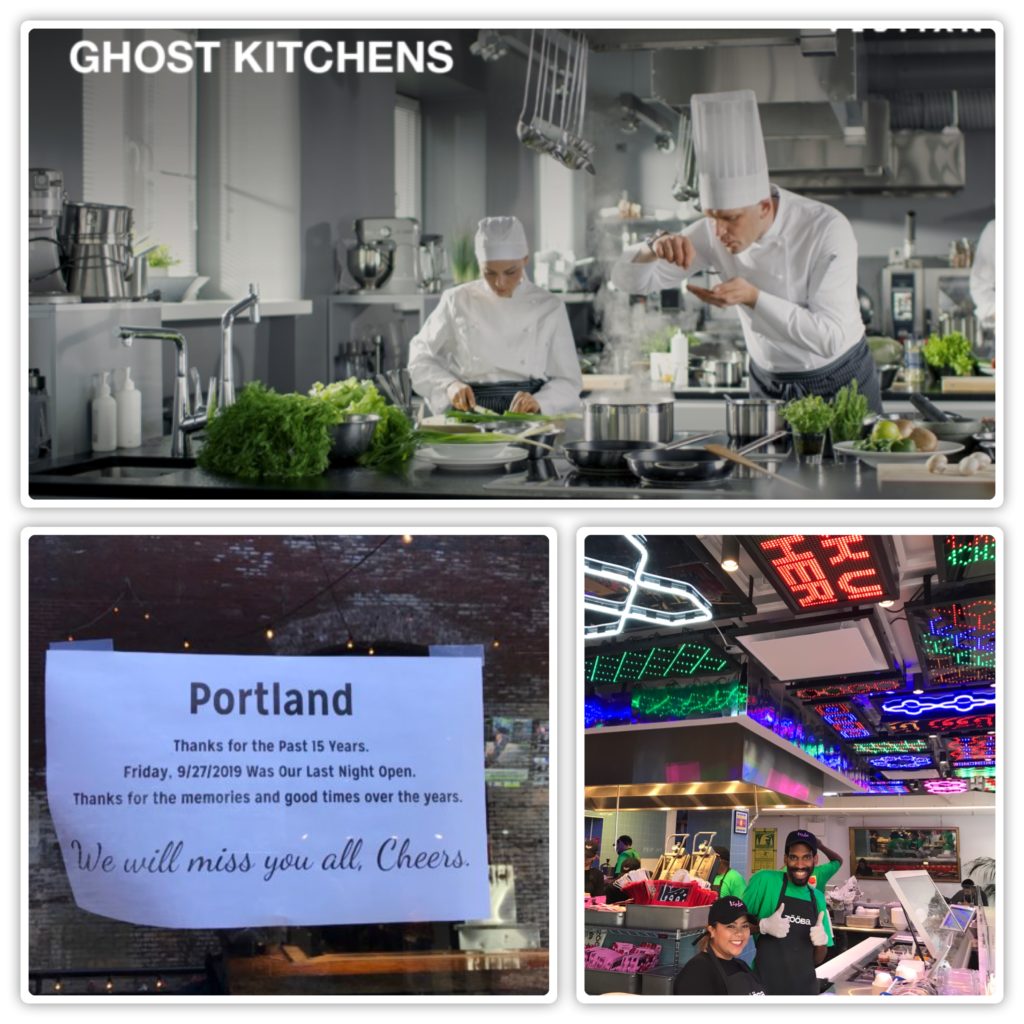
Restaurants are undergoing the same kind of seismic disruption that retail stores have gone through over the last decade. The cost- and hassles – of opening and running full service restaurants is overwhelming, especially as local governments ordain everything from how owners can schedule their workers to NOT allowing restaurants the efficiencies and safety of going cashless.
Expect restaurants to increasingly opt for fast-casual concepts that are service free, specialized, and inexpensive.
I am also very intrigued by the Cloud Kitchen concept. It perfectly addresses the confluence of trends we’re seeing from co-sharing to e-commerce to at-home delivery.
What’s trending?
Food Halls
Every time a new one opens, I think this has got to be the last one. But nope, not yet. The latest one to open in NYC is at Essex Market and when completed it will be a 150,000 sq. ft. mega-market. Time Out is also continuing to open markets around the country, the latest in Chicago.
Shared/Virtual/Cloud Kitchens (from Opinionator post dated 3/4/2019
Travis Kalanick’s new startup is CloudKitchens.
It’s rooted in the fact that restaurants are harder to maintain and run and that more people are routinely ordering food for delivery. This concept has huge potential in the States.
Kalanick is currently taking his concept to China where cloud kitchens are booming.
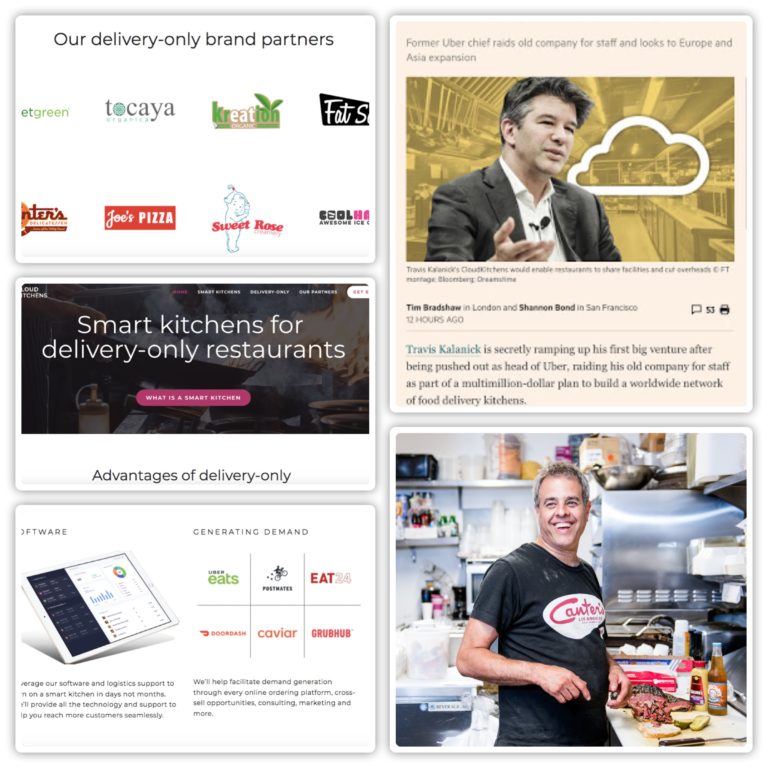
Per TechCrunch: China’s food-delivery market is worth $37 billion dollars, with 256 million people having used online food ordering services in 2016. The number is expected to grow to 346 million this year.
The big player in China is Panda Selected. Its kitchens are typically 5,000-square-feet in size and can accommodate up to 20 restaurants in each space.
Yo! We’re Eating Healthy Now
Whether these choices are actually healthier or not remains to be seen but we are going all-in on vegan, plant-based meals, vegetable-forward restaurants, faux-meat (and soon faux-chicken and fish), and non-dairy milk, e.g., oat milk.
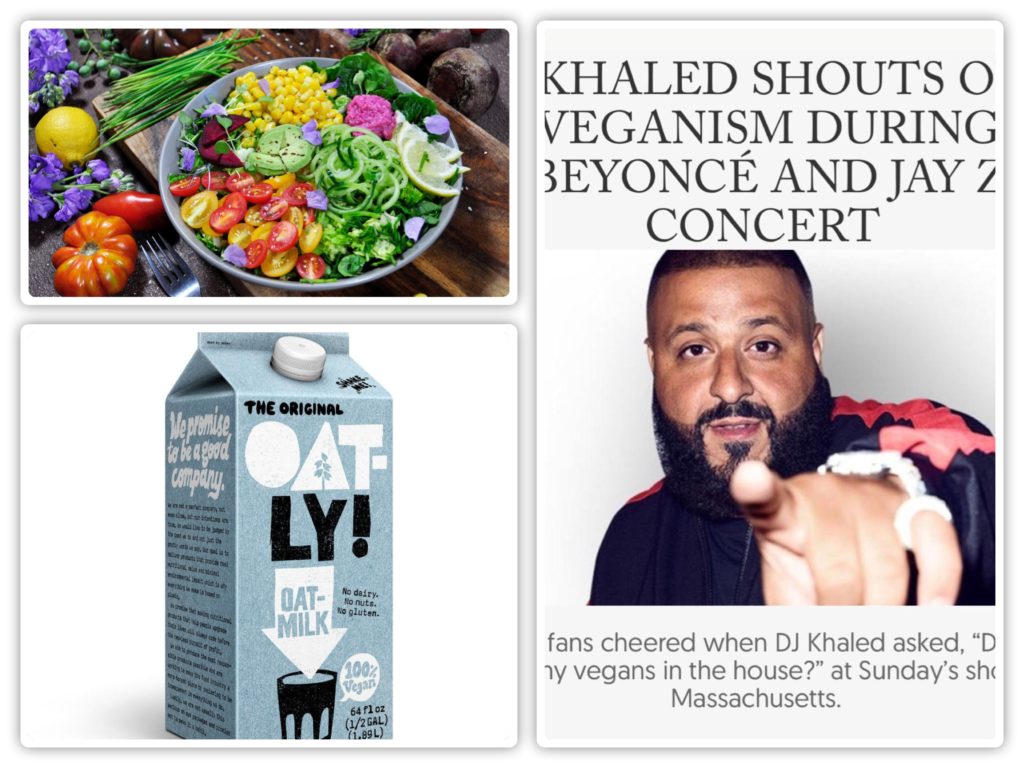
Sober-curious/ mindful drinking
This is a HUGE trend. I have never before heard as many people talking about cutting back on drinking. Dry January 2020 will be a major tipping point. Mocktails, however, have not gained any traction as far as I can tell. People seem to be primarily switching out alcohol for sparkling water.
Asian Cuisine
MAJOR. Everything from amazing Korean cooking (several of the most acclaimed restaurants in NYC are Korean) to outrageously expensive omakase restaurants often with only 6-10 seats. Dumplings continue to be popular as are hot pot restaurants.
Cannabis and CBD – not necessarily coming up green!
I’ve written previously that this would be a major opportunity but it’s not clear to me what is happening. There are many CBD stores throughout NYC and many of the places I visited on my American road trip this year were awash in dispensaries but I am not tracking this trend other than to recognize it is getting a lot of celebrity stakeholders (from Mike Tyson to Martha Stewart and Jay Z). Everybody I know is using CBD for their various ailments – and swear by it (I’m not convinced).
What didn’t work out as planned
Danny Meyer’s No Tipping policy went nowhere fast. A few progressive restaurants tried it but at this point, I’m not aware of any that still have the policy in place. It was a bridge too far for most diners.
What’s next?
I expect more restaurants to focus on dialing down the noise level and adding better lighting. A great example is Floret at Sister City Hotel. It’s a super cool spot with a great vibe and delicious food and you can have a conversation without screaming or straining to hear what your dinner mates are saying. Lighting is also flattering and sufficient that you can easily read the menu. Always full of cool young things, so kudos to Floret!
In terms of specific ingredients or menu items that are trending, cauliflower is still going strong as are oysters, ceviche (vs. poke), eggs over easy are being added to everything from Cacio e Pepe to salads (not my thing!). Finally, if you are still cocktailing, espresso martinis are all the rage.
9. ARTS, CULTURE, AND ENTERTAINMENT
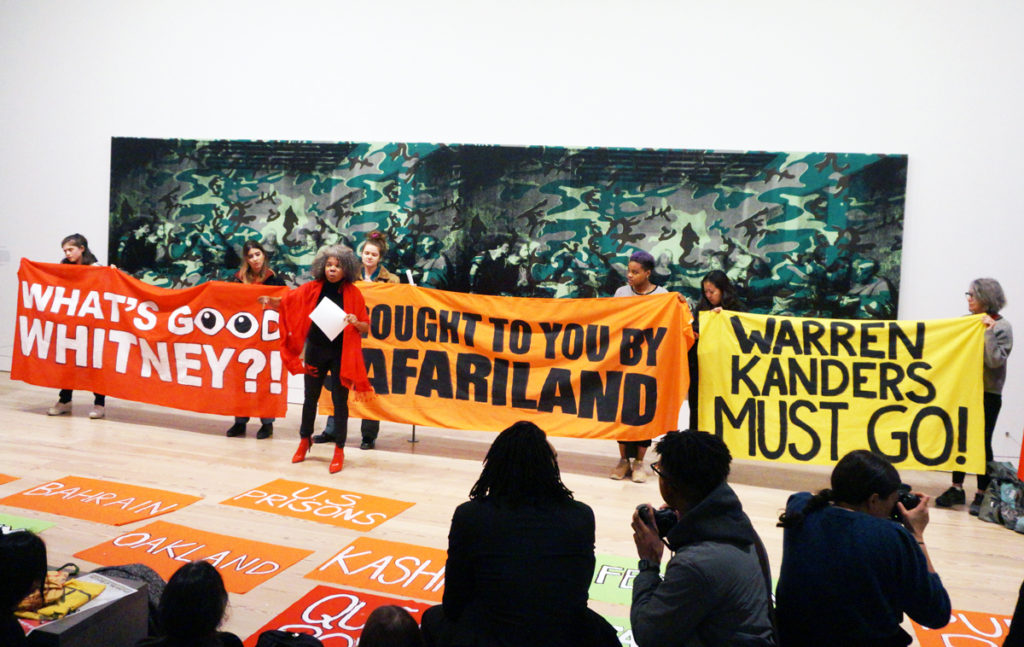
Where do we even start? The biggest story of the year was clearly the activism and protests around the Whitney Biennial. That culture clash then spilled out to encompass donors and board members across all major institutions both here and abroad. I’ve also noticed a significant uptick in curators switching jobs – there’s something going on that’s making people quit or get fired at a much more rapid pace than I’ve seen previously.
Cancel culture and purity tests
Perceived Impure Money and Toxic Philanthropy Is In The Crosshairs. As the art world grapples with institutions built on what is now being called “toxic philanthropy,” an alternative funding model has yet to be developed. Time will tell if this intolerance to business and money will upend the art world.
I’m most curious about how stringent artists will be in distancing themselves from collectors or institutions that do not pass the purity test. Will they demand that those collectors return their work to them and provide the collectors with a full refund? It would seem that is what the situation demands, otherwise, the whole thing is just activism as performance.
Has cultural sensitivity and intolerance gone too far? Three recent instances struck me as being particularly extreme.
- Dr. Sonja Falck, a British psychotherapist suggested that calling someone a “nerd” or “geek” should be considered a hate crime because anti-IQ insults are divisive and humiliating and as such can have negative effects that last a lifetime.
- Comedian Whitney Cummings, was a showrunner on a TV show when she was reported to human resources for saying “Merry Christmas” to an intern who was offended because she is agnostic.
- Andrew Sullivan recently wrote an extraordinary piece in support of JK Rowling taking a stand in support of Maya Forstater who questioned gender vs. sex and got fired for it, not for being wrong in her thinking but that her argument is fundamentally illegitimate and shouldn’t even be entertained, let alone accorded respect (her argument, btw, was that while gender can be changed, sex cannot). Sullivan states that as a gay man he no longer identifies with this type of activism. Worth a read.
But culture clash aside, I did see and experience some major art and entertainment this year. Here are my top 5.
Beyond The streets Brooklyn: the premier exhibition of graffiti, street art and beyond: This show was 100 times better than the Whitney Biennial. Amazing.
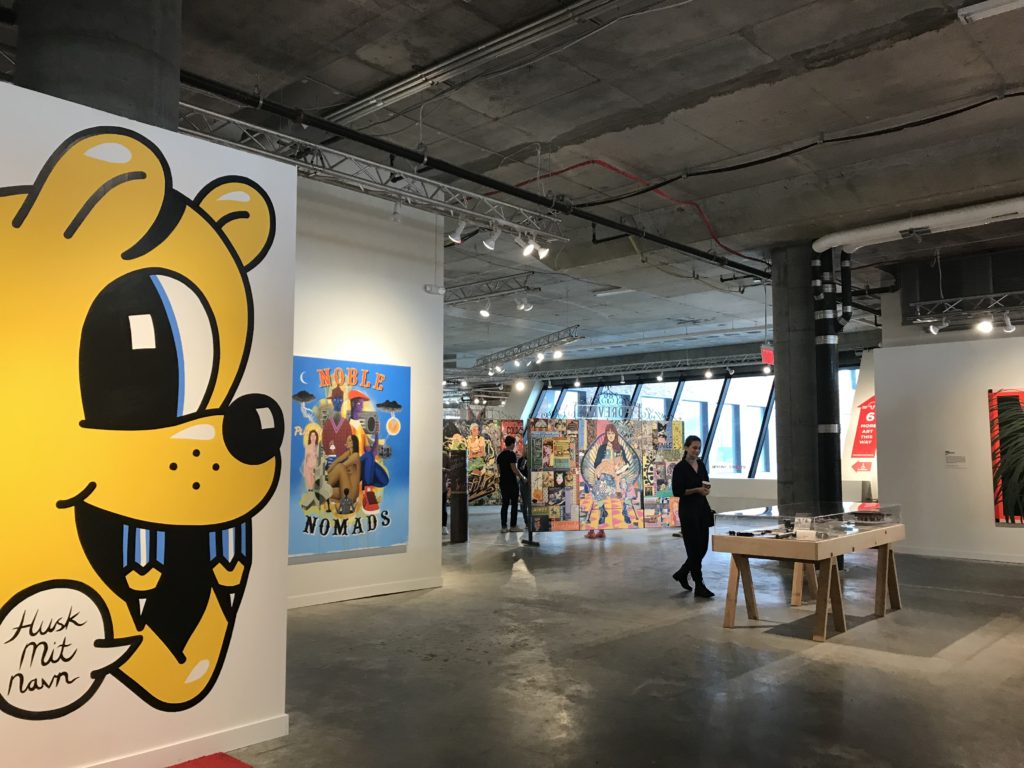
T.C. Cannon: Edge of America at the Natl Museum of the American Indian – FANTASTIC!

A NATION OF ONE: BRAD KAHLHAMER AT THE MINNESOTA MUSEUM OF AMERICAN ART – i know, a bit biased in my love of this artist but this show was spectacular.
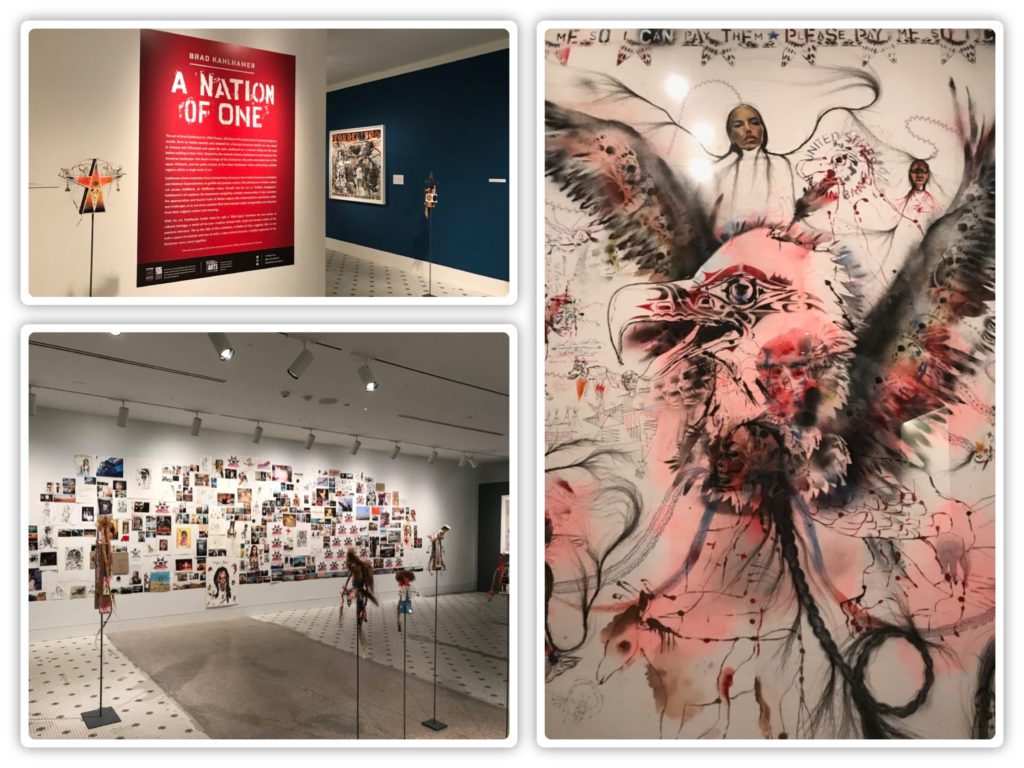
Oklahoma on Broadway. extraordinary remake of the classic musical. It’s sexy AF and totally cool.

Brandi Carlile – LOVED HER. Incredible performer, commands the stage and makes a sold out Madison Square Garden feel cozy and intimate

What’s Next?
Artworld Diversity. The artworld is becoming extremely diverse. Black artists have been in the spotlight (deservedly so) and now I’m detecting new energy and buzz around Native American artists. There is a momentous show by Canadian Cree artist Kent Monkman that just opened at the MET. Seeing it this coming week.
It must be Instagrammable. All major art shows do better if they have been conceived with Instagram in mind. Zwirner Gallery does a particularly great job of curating shows that work superbly on social media, e.g., Kusama, Rhoades, Raymond Pettibon.
That said, I for one am tired, bored, and over the so-called Instagram-museums and experiences, e.g., Color Factory. I keep hoping they’ve worn out their welcome but not quite yet.
YouTube videos have greater reach than TV networks. YouTube videos viewed on mobile devices reach more US audience members than any TV network, with over 1 billion hours watched every day. Videos are also becoming shorter. In 2018, the average video was 4.07 minutes, 33% shorter than 2017 videos.
Interesting aside about Instagram, Cardi B and the demise of strip club entertainment. Apparently millennials do not patronize strip clubs to the same degree that boomers did. Strip club owners believe a lot of it has to do with their no-photography/no Instagram rule, or as they say, it’s a “private” industry in a social world. So while nearly every other type of business benefits from free publicity of social media, the strip club industry has not. But the dancers are interested in getting on social from an entrepreneurial standpoint. A role model for the dancers is Cardi B who managed to parlay a career as a dancer at an adult club and used social media to promote herself, her body, her personality to become an award winning music performer.
10. THE ASIAN CENTURY IS SET TO BEGIN: (some might disagree)
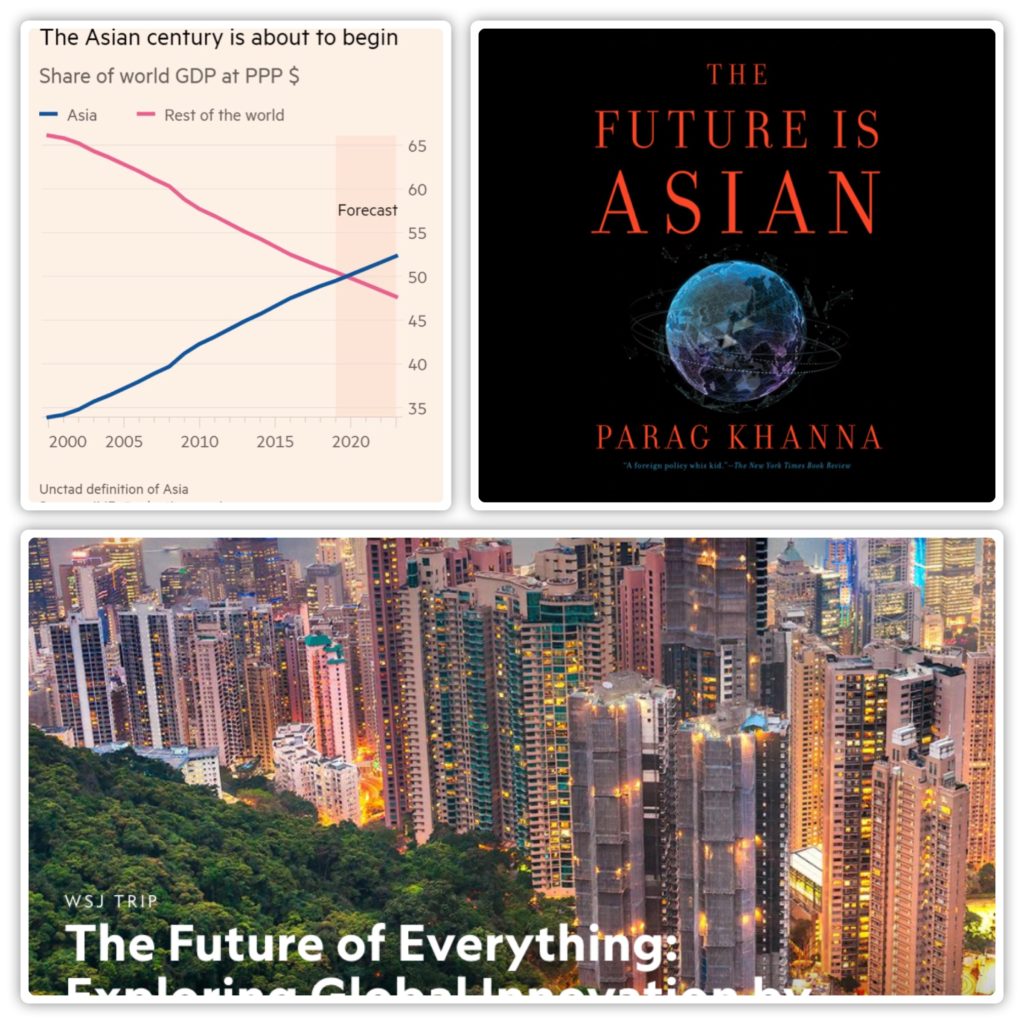
I wrote about this in November and will be exploring this part of the world firsthand in May on my next Nat Geo trip to Asia.
“The West’s two-century epoch as global powerhouse is at an end. Over the past five decades, hundreds of millions of people in Asia have been lifted out of poverty and many Asian economies have graduated to middle-income or advanced economic status.”
Kishore Mahbubani in his latest book “Has the West Lost It?”
Advancing through Education
China is a huge learner market with 283 million students from pre-kindergarten through higher education. To put this in perspective, China’s market is 4 times the size of the US (77 million students). Source: Navitas Ventures – worth a read!)
“There’s no notion in China that the way things currently are, will be the way things continue to be.”
A Chinese EdTech Founder
- Chinese parents prioritize education and are willing to spend on it. Chinese households spend 15% to 21% of a family’s total income on education, compared to just 2% in America.
- China is one of the fastest digitizing markets — with over 171 million digital learners and 142 million mobile learners — growing at 10.7% and 19.6% vs. the previous year.
Technology Developments
- Expanding internet access — China has rapidly adopted the internet, now with over 801.6 million users (of which 788 million are also mobile) and still growing quickly.
- Predisposition for online commerce — online transactions have grown at 32% annually over the last five years, and mobile payments are more than 5 times higher than in the US.
- AI-backed technology advancements — China is competing head-to-head with the US as a global technology leader, particularly in the area of artificial intelligence. And most importantly, Chinese education companies deploy advanced technologies to explore the latest learning and teaching innovations.
- A culture of constant change. China rapidly adopts new technology innovations — just look at how quickly China has become an almost cashless society. China’s rapid economic development over the past 40 years has created a culture that believes that ‘change is the new constant.’ In education, this has led parents, teachers and students to be much more open than their western counterparts in trialing alternatives to traditional face-to-face education.
But it’s not just China
- Asia is home to more than half the world’s population.
- Of the world’s 30 largest cities, 21 are in Asia.
- China is now a bigger economy than the US, accounting for 19% of world output this year, more than double the 7% recorded in 2000.
- India is the world’s third-largest economy, with a GDP double the size of either Germany or Japan, both of which had economies larger than India’s in 2000.
- Indonesia is on track to become the world’s seventh-largest economy by 2020 and will have overtaken Russia by 2023 as the sixth biggest.
- Vietnam has overtaken 17 countries in a ranking of economies since 2000, including Belgium and Switzerland.
- The Philippines is now a larger economy than the Netherlands while Bangladesh has overtaken 13 other economies in the past 20 years.
I’m excited about Asia for many reasons.
One, as I mentioned before, I am booked on the “Future of Everything. Global Innovation” trip with Nat Geo and the WSJ in May. Our itinerary is filled with meetings with innovators and experts in Asia including Japan (future of environmental conservations), China (future of health and medicine), South Korea (future of the brain), Mongolia (future of natural resources), Uzbekistan (future of trade).
Second, I am excited to learn and see firsthand what Asian countries are doing to surpass America and Europe economically, technologically – and soon, creatively.
From my perspective, the West lost it when they started spending too much time and energy looking backward instead of forward. If our priorities are all about returning to or maintaining, the past, we will be stuck there and deservedly so. And it is happening. In France, taxi drivers rejoice because they’ve kicked out Uber. In NYC, they rejoice because they’ve stopped Amazon from bringing in 25,000 jobs. Americans elect a president who promises to bring back coal.
The only direction I want to head in is towards the future. And we do that by saying YES (resoundingly) to the new.
Bottom Line.
If you’re still with me, thank you, thank you.
There’s a lot to digest here.
Technology is the big driver of change. Trying to stop its progress is as futile as people in the past sticking with candles so as to avoid that new-fangled electricity. And it did take Edison 50 years to get even half of all homes hooked up to electricity. But progress is inevitable.
Key, I believe, is to stay flexible, forward-looking and personally optimistic.
